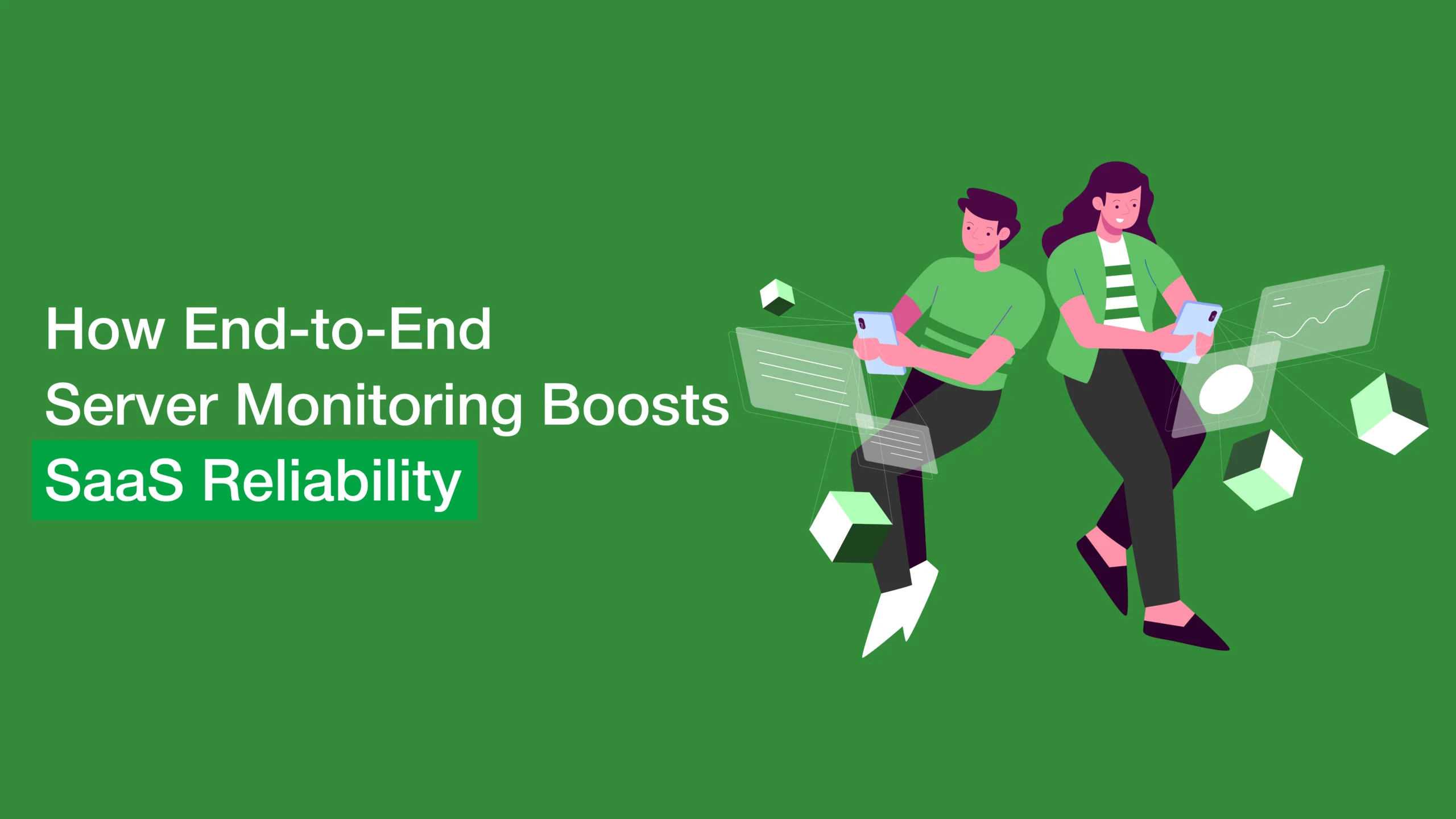
Uptime and dependability are more than just performance indicators in the SaaS-driven economy of today; they are essential to the...

In today’s fast-paced digital economy, fintech platforms are expected to offer seamless, secure, and near-instantaneous transactions. Behind the scenes, however, it’s robust server monitoring tool that ensures this level of performance.
In today’s fast-paced digital economy, fintech platforms are expected to offer seamless, secure, and near-instantaneous transactions. Behind the scenes, however, it’s robust server monitoring tool that ensures this level of performance.
A few seconds of downtime or unnoticed server lag can result in thousands of failed transactions, frustrated customers, and significant financial losses. That’s why server monitoring for fintech is a mission-critical function, not just an IT formality.
This blog explores how real-time server monitoring, transaction monitoring systems, and proactive infrastructure management can drastically reduce transaction failures — and ensure reliability at scale.
Fintech platforms routinely process hundreds or thousands of digital payments, credit checks, and authorizations every second. Delays in transaction processing — even for a few seconds — can cause a cascade of issues, including failed payments, regulatory risks, and lost customer trust.
Example:
A mobile payments platform identified a recurring spike in transaction declines during peak evening hours. Upon investigating server load data, they discovered memory overuse during high-concurrency operations. By implementing autoscaling and real-time monitoring, they resolved the issue and dramatically improved transaction success rates.
Transaction failures are more than an inconvenience — they erode brand trust, increase customer support overhead, and impact regulatory compliance. Common causes include:
Example Generic:
A financial trading platform experienced frequent payment gateway failures during market open hours. On further analysis, it was found that backend APIs were failing under concurrent user stress. Real-time monitoring dashboards helped detect the failure pattern, enabling the team to resolve bottlenecks before end users were impacted.
To build a fail-safe digital finance platform, monitoring must extend across:
Best Practice:
Use observability tools that correlate system behavior with business outcomes — such as mapping error spikes to transaction failure rates or downtime to revenue loss.
Modern monitoring tools for servers do more than detect downtime. The best ones deliver:
Example Generic:
A wallet app noticed intermittent UPI payment failures in certain geographies. On closer inspection, the failures were tied to regional ISP-level packet loss. Real-time alerts from monitoring tools helped the team reroute traffic dynamically — resulting in a measurable increase in payment success rate.
Using real-time server monitoring and transaction monitoring systems, fintech companies can:
Server monitoring for fintech involves tracking performance metrics, digital payment flows, and infrastructure uptime in real time. It ensures seamless transactions, detects bottlenecks, and supports compliance by integrating with tools like AML transaction monitoring systems and payment infrastructure alerts.
In fintech, every transaction counts. The difference between customer satisfaction and churn often lies in how fast your systems recover from — or better yet, prevent — failure.
With the right monitoring tools for servers, you’re not just fixing issues — you’re building a culture of uptime, trust, and compliance.
See how Kllyroo can reduce your transaction failure rates.
Start your free trial today – No credit card required.
It’s the process of continuously tracking server health, application behavior, and transaction status to prevent failures in fintech applications.
Because it ensures seamless user experience and prevents financial loss by identifying transaction failures and system bottlenecks in real time.
By analyzing transaction patterns and triggering alerts for unusual behavior, these systems support financial institutions in detecting potential fraud or money laundering activities.

Uptime and dependability are more than just performance indicators in the SaaS-driven economy of today; they are essential to the...

Continuous accessibility is essential for e-commerce to flourish. E-commerce website uptime is now essential in 2025, when client expectations are...

The fintech industry operates on trust. Every login attempt, transaction, and real-time balance update needs to be perfect. Fintech infrastructure...
WhatsApp us